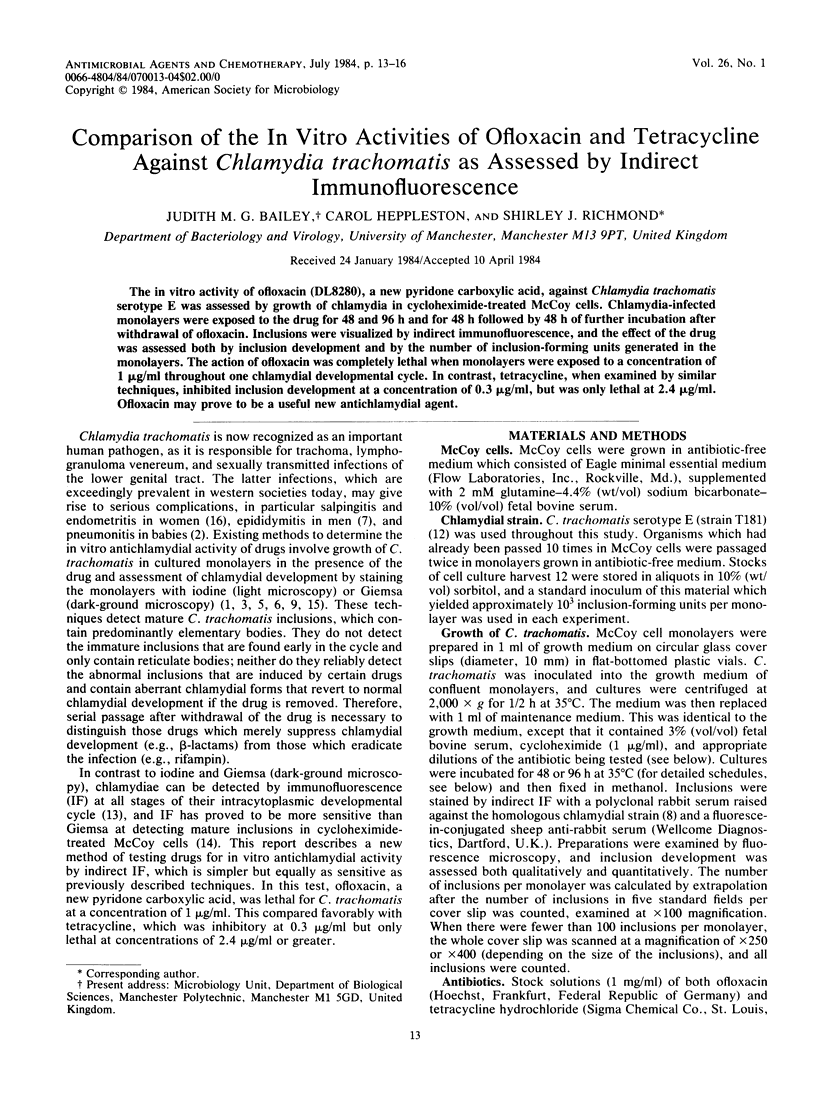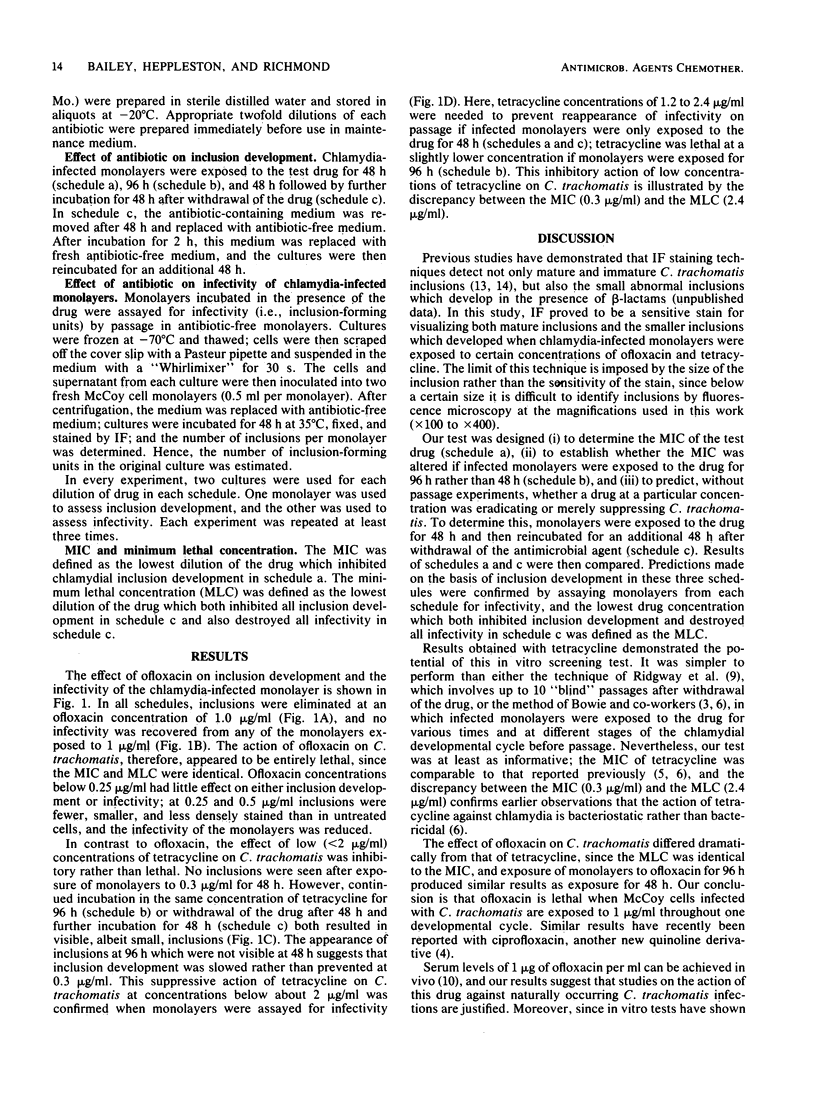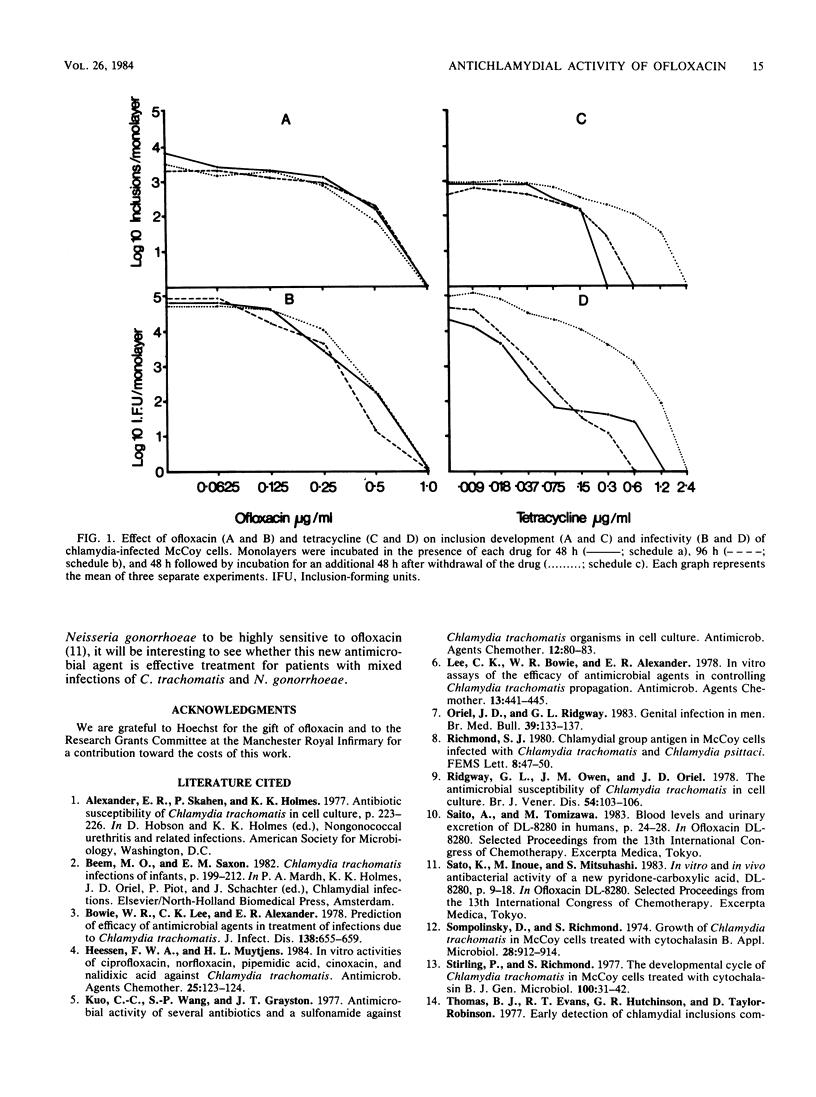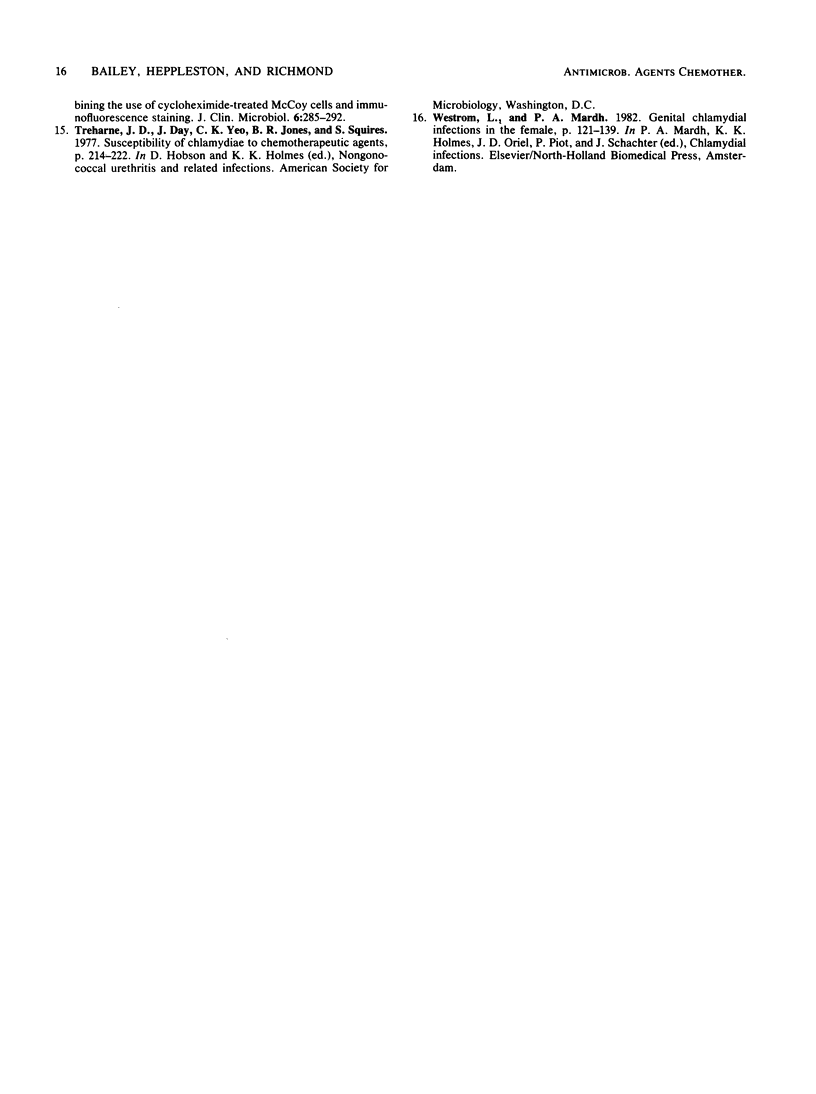Abstract
The in vitro activity of ofloxacin (DL8280), a new pyridone carboxylic acid, against Chlamydia trachomatis serotype E was assessed by growth of chlamydia in cycloheximide-treated McCoy cells. Chlamydia-infected monolayers were exposed to the drug for 48 and 96 h and for 48 h followed by 48 h of further incubation after withdrawal of ofloxacin. Inclusions were visualized by indirect immunofluorescence, and the effect of the drug was assessed both by inclusion development and by the number of inclusion-forming units generated in the monolayers. The action of ofloxacin was completely lethal when monolayers were exposed to a concentration of 1 microgram/ml throughout one chlamydial developmental cycle. In contrast, tetracycline, when examined by similar techniques, inhibited inclusion development at a concentration of 0.3 micrograms/ml, but was only lethal at 2.4 micrograms/ml. Ofloxacin may prove to be a useful new antichlamydial agent.
Full text
PDF



Selected References
These references are in PubMed. This may not be the complete list of references from this article.
- Bowie W. R., Lee C. K., Alexander E. R. Prediction of efficacy of antimicrobial agents in treatment of infections due to Chlamydia trachomatis. J Infect Dis. 1978 Nov;138(5):655–659. doi: 10.1093/infdis/138.5.655. [DOI] [PubMed] [Google Scholar]
- Heessen F. W., Muytjens H. L. In vitro activities of ciprofloxacin, norfloxacin, pipemidic acid, cinoxacin, and nalidixic acid against Chlamydia trachomatis. Antimicrob Agents Chemother. 1984 Jan;25(1):123–124. doi: 10.1128/aac.25.1.123. [DOI] [PMC free article] [PubMed] [Google Scholar]
- Kuo C. C., Wang S. P., Grayston J. T. Antimicrobial activity of several antibiotics and a sulfonamide against Chlamydia trachomatis organisms in cell culture. Antimicrob Agents Chemother. 1977 Jul;12(1):80–83. doi: 10.1128/aac.12.1.80. [DOI] [PMC free article] [PubMed] [Google Scholar]
- Lee C. K., Bowie W. R., Alexander E. R. In vitro assays of the efficacy of antimicrobial agents in controlling Chlamydia trachomatis propagation. Antimicrob Agents Chemother. 1978 Mar;13(3):441–445. doi: 10.1128/aac.13.3.441. [DOI] [PMC free article] [PubMed] [Google Scholar]
- Oriel J. D., Ridgway G. L. Genital infection in men. Br Med Bull. 1983 Apr;39(2):133–137. doi: 10.1093/oxfordjournals.bmb.a071804. [DOI] [PubMed] [Google Scholar]
- Ridgway G. L., Owen J. M., Oriel J. D. The antimicrobial susceptibility of Chlamydia trachomatis in cell culture. Br J Vener Dis. 1978 Apr;54(2):103–106. doi: 10.1136/sti.54.2.103. [DOI] [PMC free article] [PubMed] [Google Scholar]
- Sompolinsky D., Richmond S. Growth of Chlamydia trachomatis in McCoy cells treated with cytochalasin B. Appl Microbiol. 1974 Dec;28(6):912–914. doi: 10.1128/am.28.6.912-914.1974. [DOI] [PMC free article] [PubMed] [Google Scholar]
- Stirling P., Richmond S. The developmental cycle of Chlamydia trachomatis in McCoy cells treated with cytochalasin B. J Gen Microbiol. 1977 May;100(1):31–42. doi: 10.1099/00221287-100-1-31. [DOI] [PubMed] [Google Scholar]


